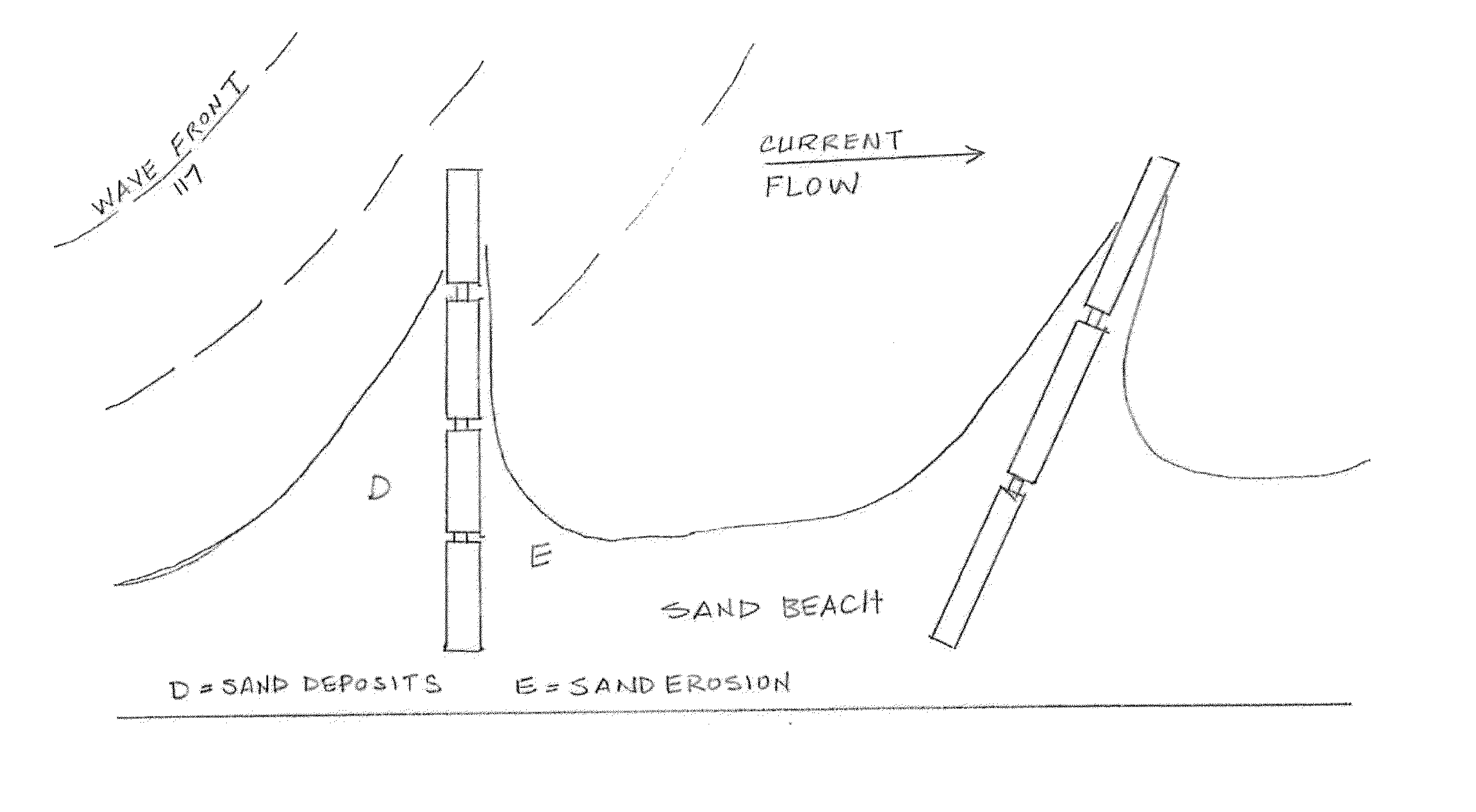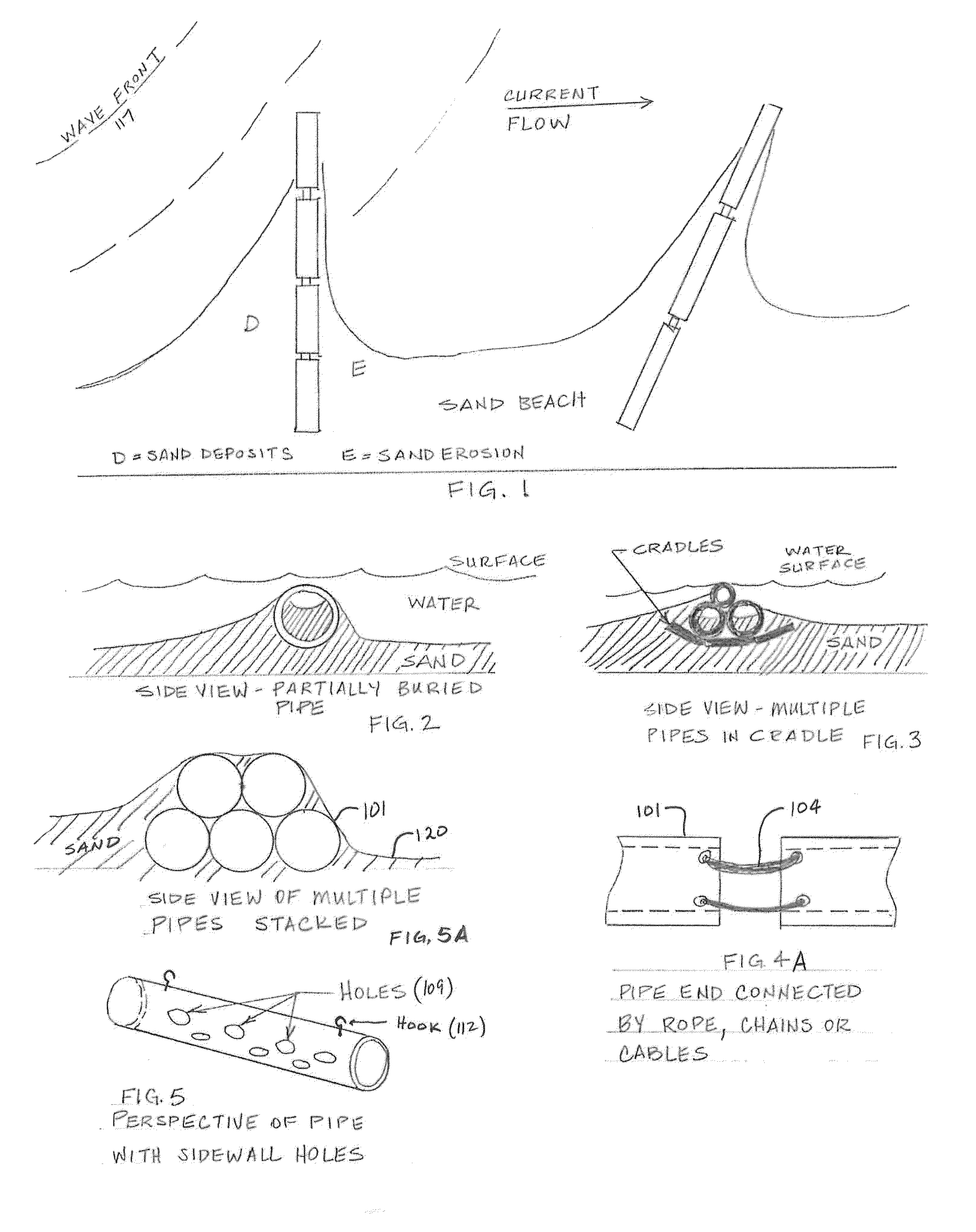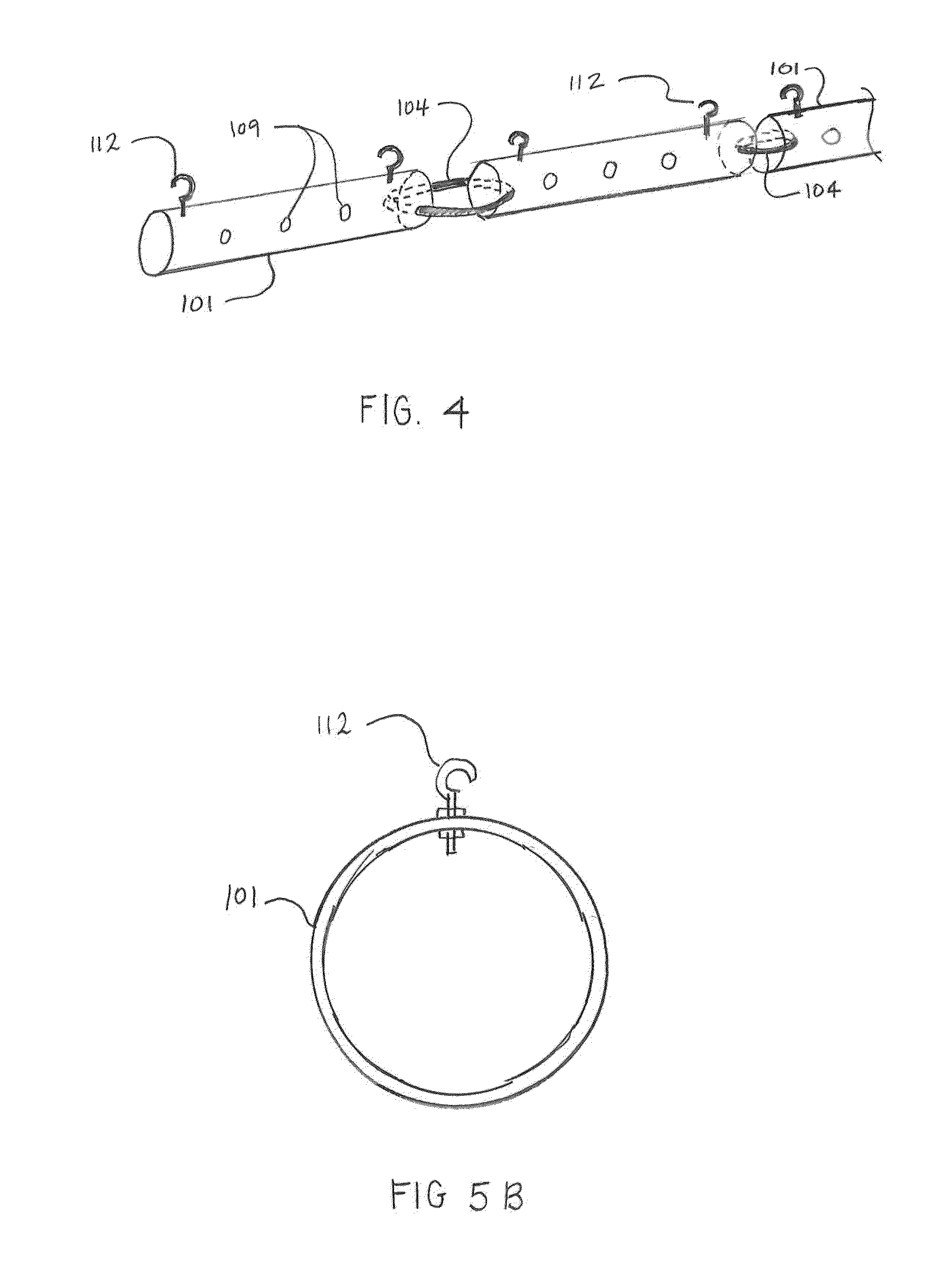System and Method for Building and Maintaining Stable Sand Beach and Shoreline Profiles and for Controlling Beach or Riparian Erosion
a sand beach and shoreline profile technology, applied in the direction of groynes, construction, marine site engineering, etc., can solve the problems of inability to maintain stable sand beach and shoreline profile, so as to eliminate extra cost and logistical problems, and eliminate buoyancy
- Summary
- Abstract
- Description
- Claims
- Application Information
AI Technical Summary
Benefits of technology
Problems solved by technology
Method used
Image
Examples
Embodiment Construction
[0038]A portion of the disclosure of this patent document contains material which is subject to copyright protection. The copyright owner has no objection to the facsimile reproduction by anyone of the patent document or the patent disclosure as it appears in the Patent and Trademark Office patent file or records, but otherwise reserves all copyright rights whatsoever.
[0039]The invention uses man-made synthetic, normally plastic-type pipes (101) with varying flexibility depending on composition and thickness of the pipe (101). The plastic pipe (101) composition is chosen by the coastal engineering professional for durability and ability to withstand the corrosive effects of seawater (102). The pipes (101) used in the design shall have various lengths, diameters and colors as necessary to achieve the design intent. These pipes (101) are to be self-filling by means of large holes (109) drilled into them before positioning on the seafloor (103) to allow sand to fill the interior space ...
PUM
 Login to View More
Login to View More Abstract
Description
Claims
Application Information
 Login to View More
Login to View More - R&D
- Intellectual Property
- Life Sciences
- Materials
- Tech Scout
- Unparalleled Data Quality
- Higher Quality Content
- 60% Fewer Hallucinations
Browse by: Latest US Patents, China's latest patents, Technical Efficacy Thesaurus, Application Domain, Technology Topic, Popular Technical Reports.
© 2025 PatSnap. All rights reserved.Legal|Privacy policy|Modern Slavery Act Transparency Statement|Sitemap|About US| Contact US: help@patsnap.com



